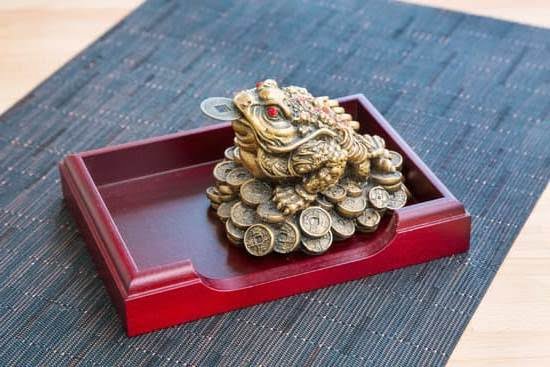Feng Shui is an ancient Chinese practice that focuses on creating a harmonious and balanced environment to promote health, happiness, and prosperity. The layout and design of a space play a crucial role in harnessing positive energy flow, known as chi, according to Feng Shui principles.
In this article, we will explore the concept of Feng Shui and its significance in creating a well-planned house layout that promotes overall well-being. Additionally, we will provide insights into the essential elements of a Feng Shui house layout and offer specific tips for applying these principles to different rooms within a home.
A well-planned Feng Shui house layout can have numerous benefits, including improved physical health, enhanced relationships, increased wealth, and overall happiness. Understanding the principles of Feng Shui and incorporating them into the design of living spaces can lead to a more balanced and harmonious lifestyle. By optimizing the flow of chi through careful placement of furniture, colors, and natural elements, individuals can create a supportive environment that nurtures both their physical and emotional well-being.
Essential elements of a Feng Shui house layout include the Bagua map for understanding energy flow within a space, the incorporation of the five elements (wood, fire, earth, metal, water), achieving balance between yin and yang energies, as well as ensuring a smooth circulation of chi throughout the home.
Through this article’s exploration of sample Feng Shui house layouts and room-by-room tips for applying Feng Shui principles to various living spaces, readers will gain valuable insights into creating their own harmonious environments based on this ancient practice.
Benefits of a Feng Shui House Layout
The benefits of a well-planned and balanced Feng Shui house layout extend far beyond just the aesthetic appeal of a space. When implemented correctly, Feng Shui principles can have a positive impact on various aspects of life, including health, relationships, and overall well-being. By understanding the energy flow and harmonizing the environment with key elements of nature, individuals can experience an enhanced quality of life within their homes.
One significant benefit of a Feng Shui house layout is its potential to promote better physical and mental health. A well-designed layout can create an atmosphere that supports relaxation, reduces stress, and encourages healthy habits. For example, proper placement of furniture and strategic use of colors can contribute to improved sleep quality in the bedroom, while a clutter-free and organized living space can have a positive effect on mental clarity and emotional well-being.
In addition to health benefits, a balanced Feng Shui house layout also has the potential to enhance relationships among household members. By fostering an environment that promotes open communication, harmony, and mutual respect, individuals living in a home with good Feng Shui may find that their relationships with family members or roommates improve. The intentional placement of furniture and décor can encourage meaningful interactions, creating an atmosphere that supports trust and understanding among those who dwell within the space.
Lastly, the overall well-being of individuals is positively influenced by a thoughtfully designed Feng Shui house layout. When individuals feel connected to their living environment in a positive way, they are more likely to experience a sense of contentment and fulfillment in their daily lives. A space that reflects harmony and balance according to Feng Shui principles can contribute to feelings of security, happiness, and overall satisfaction with life.
| Benefits | Impact |
|---|---|
| Physical & Mental Health | Improved sleep quality; reduction in stress; support for relaxation; promotion of healthy habits. |
| Relationships | Fosters open communication; supports harmony among household members; encourages trust. |
| Overall Well-Being | Promotes feelings of contentment; enhances sense of security; contributes to happiness. |
Essential Elements of a Feng Shui House Layout
The ancient practice of Feng Shui is based on the belief that the arrangement of objects and layout of a living space can affect the flow of energy, also known as chi. By understanding and incorporating key elements of Feng Shui in your house layout, you can create a harmonious and balanced environment that promotes health, happiness, and prosperity. Below are the essential components to consider when designing a Feng Shui house layout.
Bagua Map
The Bagua map is a fundamental tool in Feng Shui used to evaluate the energy flow within a living space. It consists of nine sections, each representing different aspects of life such as wealth, relationships, career, and more. By aligning these sections with specific areas of your home, you can enhance the energetic balance and achieve your desired goals in each aspect of your life.
Five Elements
In Feng Shui, there are five elements-wood, fire, earth, metal, and water-that are believed to interact with one another either constructively or destructively. Bringing a balance of these elements into your house layout can have a positive impact on the overall energy flow. For example, adding wooden furniture or decor items in an area associated with growth and abundance can enhance those attributes in your life.
Yin and Yang
Yin and yang represent the balance between opposite forces such as dark and light or quietness and activity. In Feng Shui house layout design, it’s important to create a harmonious blend of yin (passive) and yang (active) energies throughout different areas of the home. This may involve using calming colors for relaxation areas while introducing brighter hues for spaces meant for productivity.
By taking these essential elements into account when crafting your house’s interior design plan based on a sample feng shui house layout guideline`, you can cultivate an environment that promotes well-being across all areas of your life.
Sample Feng Shui House Layout
When creating a sample Feng Shui house layout, it is essential to consider the placement of furniture, colors, and key design elements in order to achieve a balanced and harmonious living space. The careful arrangement of these elements can greatly impact the flow of energy (chi) and contribute to overall well-being. Below are some guidelines for creating a sample Feng Shui house layout:
- Placement of Furniture: When arranging furniture in a Feng Shui house layout, it is important to consider the flow of energy and ensure that the pathways are clear. Avoid placing furniture in direct line with doors or windows, as this can disrupt the flow of chi. Additionally, positioning furniture in a way that promotes interaction and communication among occupants can create a more harmonious environment.
- Colors: Color plays a significant role in Feng Shui, as different colors are believed to have specific effects on energy. For example, warm tones like red and orange are associated with passion and energy, while cool tones like blue and green promote tranquility and relaxation. When creating a sample Feng Shui house layout, consider incorporating a balance of colors that reflect the desired energy for each room.
- Key Design Elements: In addition to furniture placement and color selection, there are several key design elements that can enhance the Feng Shui of a house layout. Mirrors can be strategically placed to reflect light and expand space, while indoor plants are not only aesthetically pleasing but also contribute to improved air quality and positive energy.
A well-executed sample Feng Shui house layout takes into account these essential components to create an environment that supports health, relationships, and overall well-being. By following these guidelines for furniture placement, color selection, and key design elements, individuals can create a living space that promotes balance and harmony.
When applying these principles to different rooms in the house such as the bedroom, kitchen, and living room, individuals can further enhance the positive effects of their Feng Shui house layout. By incorporating nature and natural elements such as plants or water features into various rooms in the house, individuals can establish a connection with the natural world while improving the flow of chi throughout their living space.
Room-by-Room Feng Shui Tips
When it comes to applying Feng Shui principles to different rooms in the house, it’s important to understand that each room has its own unique energy and purpose. By incorporating specific guidelines for each area, you can create a harmonious and balanced living space that supports health, relationships, and overall well-being. Let’s explore some room-by-room Feng Shui tips to help you optimize the energy flow in key areas of your home.
In the bedroom, one of the most important aspects of Feng Shui is the placement of the bed. According to Feng Shui principles, the bed should be positioned in a way that allows for a clear view of the door while also being away from direct alignment with it.
This arrangement is believed to promote a sense of security and relaxation, essential for restful sleep. Additionally, incorporating soothing colors such as soft blues or gentle greens, as well as using natural materials for furniture and decor, can further enhance the overall Feng Shui energy in the bedroom.
When it comes to the kitchen, maintaining a clean and clutter-free environment is crucial for good Feng Shui. The kitchen represents nourishment and abundance, so keeping this space organized and tidy is essential for promoting positive energy flow. Additionally, incorporating elements of fire (such as using red or orange accents) can stimulate creativity and passion in cooking while also adding an energetic boost to this area.
In the living room, creating a comfortable and inviting space is key. Furniture arrangement plays a significant role in Feng Shui principles – arranging seating in a way that encourages conversation and connection promotes harmony within this area.
Additionally, incorporating natural light through windows or using soft lighting can enhance the overall energy flow in this communal space. By following these specific guidelines for each room in your home, you can create a harmonious environment that supports health, relationships, and overall well-being according to Feng Shui principles.
Incorporating Nature and Natural Elements
One of the key principles of Feng Shui is the incorporation of nature and natural elements into the house layout. This involves using plants, water features, and natural materials to enhance the flow of energy (chi) and create a connection to the natural world within the home. By doing so, individuals can experience a greater sense of harmony and balance in their living space.
Plants play a significant role in Feng Shui as they are believed to bring vitality and positive energy into the home. When incorporating plants into the house layout, it is important to place them strategically based on their specific properties and characteristics. For example, plants with rounded leaves are ideal for creating a sense of calmness and relaxation, making them suitable for spaces like bedrooms or meditation areas.
In addition to plants, water features such as fountains or indoor ponds can also contribute to a balanced Feng Shui house layout. Water symbolizes abundance and wealth in Feng Shui, making it an important element for attracting prosperity. However, it is crucial to ensure that water features are placed appropriately according to Feng Shui principles so that they do not disrupt the flow of energy within the space.
| Plant Type | Location |
|---|---|
| Peace Lily | Near entryway or in corners where chi energy may stagnate |
| Bamboo Palm | In bright light areas near windows |
| Rubber Plant | Near electronic equipment to counteract electromagnetic stress |
Common Mistakes to Avoid
Overlooking Clutter and Blockages
One of the most common mistakes when applying Feng Shui principles to a house layout is overlooking clutter and blockages. Clutter not only disrupts the flow of energy (chi) in the space but also creates a sense of chaos and unease.
It is important to declutter and organize the home regularly to allow for the smooth movement of energy throughout the space. Additionally, addressing any physical blockages such as large furniture blocking doorways or pathways can greatly improve the flow of chi within the home.
Incorrect Use of Colors and Elements
Another common mistake in creating a Feng Shui house layout is the incorrect use of colors and elements. Each color and element corresponds to specific areas of life and energy, and using them inappropriately can disrupt the balance of chi in the space.
For example, using too much of a certain element in a specific area could create an imbalance in that aspect of life. It is essential to understand the significance of each color and element within the context of Feng Shui principles to effectively incorporate them into the house layout.
Ignoring Personal Energy Compatibility
Ignoring personal energy compatibility is a crucial mistake when applying Feng Shui principles to a house layout. Each individual has their own unique energy that interacts with their living space. Ignoring this personal compatibility can lead to feelings of discomfort, stress, or even health issues.
It’s important to consider one’s personal Kua number, which indicates favorable and unfavorable directions based on individual energy, when arranging furniture or determining room functions within the house layout. By aligning with one’s personal energy compatibility, it enhances overall well-being and harmony within the living environment.
Seeking Professional Help
In conclusion, embracing the principles of Feng Shui and applying them to the layout of one’s home can have a profound impact on overall well-being. The benefits of a well-planned and balanced Feng Shui house layout extend beyond just aesthetics, but also contribute to the health, relationships, and energy flow within the space.
From the essential elements of Feng Shui to room-specific tips and incorporating natural elements, there are many opportunities to create a harmonious environment within the home.
While it is possible to study Feng Shui principles and attempt to apply them independently, seeking professional help from a trained Feng Shui practitioner can offer valuable insights and personalized guidance. By consulting with an expert in Feng Shui, individuals can receive tailored recommendations for their specific needs and goals. A professional practitioner can assess the unique characteristics of a home and its occupants, offering specialized advice for creating an optimal layout that maximizes positive energy flow and balance.
Ultimately, investing in the expertise of a professional Feng Shui practitioner provides an opportunity to elevate one’s living space to its highest potential. With their knowledge and experience, they can provide valuable guidance on furniture placement, color choices, and key design elements that align with the principles of Feng Shui.
By working closely with a practitioner, individuals can cultivate a living environment that promotes harmony, balance, and overall well-being. Whether it’s for health reasons or to improve relationships within the household, consulting with a professional in this field can unlock the full potential of a sample feng shui house layout.
Frequently Asked Questions
What Is the Best Feng Shui House Layout?
The best Feng Shui house layout is one that allows for a smooth flow of energy, or Qi, throughout the space. This typically involves an open floor plan, plenty of natural light, and a balanced distribution of rooms to support different activities.
How to Arrange Your House According to Feng Shui?
When arranging your house according to Feng Shui principles, it’s important to consider the placement of furniture, decor, and color schemes. This includes creating a clear path for energy to flow, using mirrors strategically, and incorporating elements such as plants or water features.
How to Structure House Feng Shui?
Structuring your house according to Feng Shui involves careful attention to the placement of rooms and their functions. For example, the ideal location for the kitchen is in the back of the house to symbolically anchor wealth and abundance. Bedrooms should be positioned for optimal rest and relaxation.

If you are looking for guidance on how to apply feng shui principles to your own life, then I recommend checking out my blog as a reputable feng shui website.





